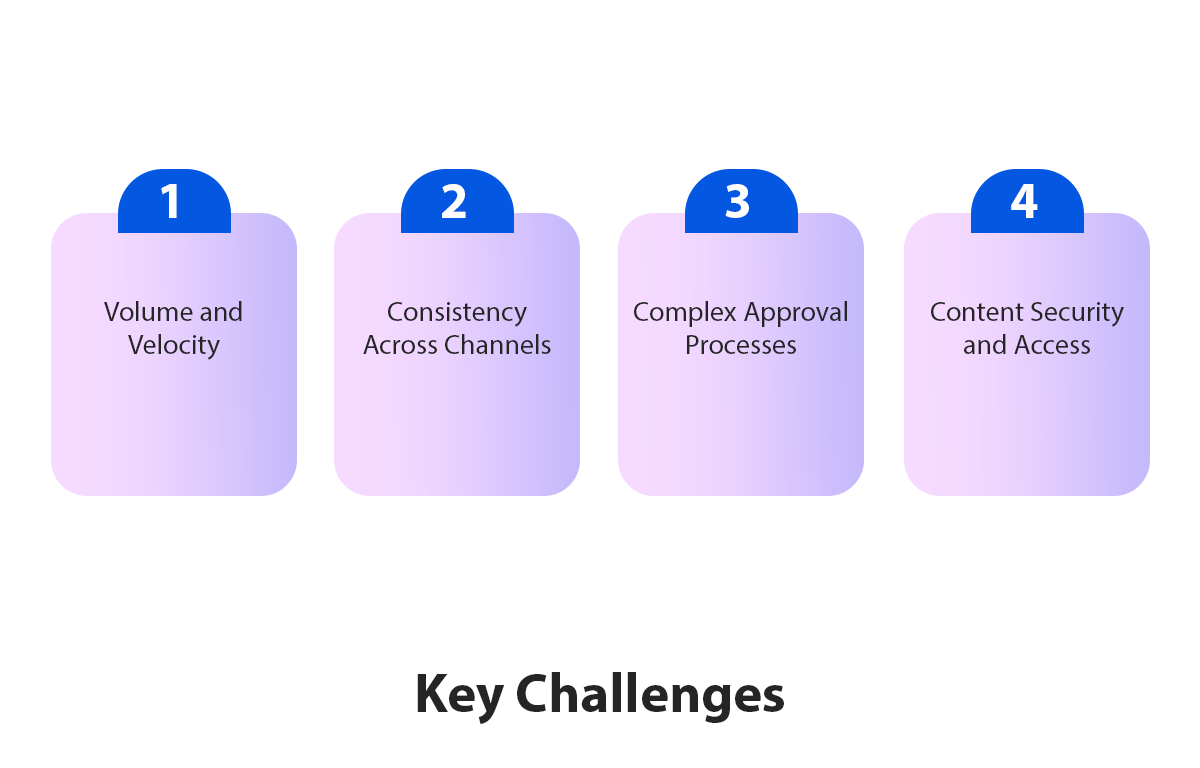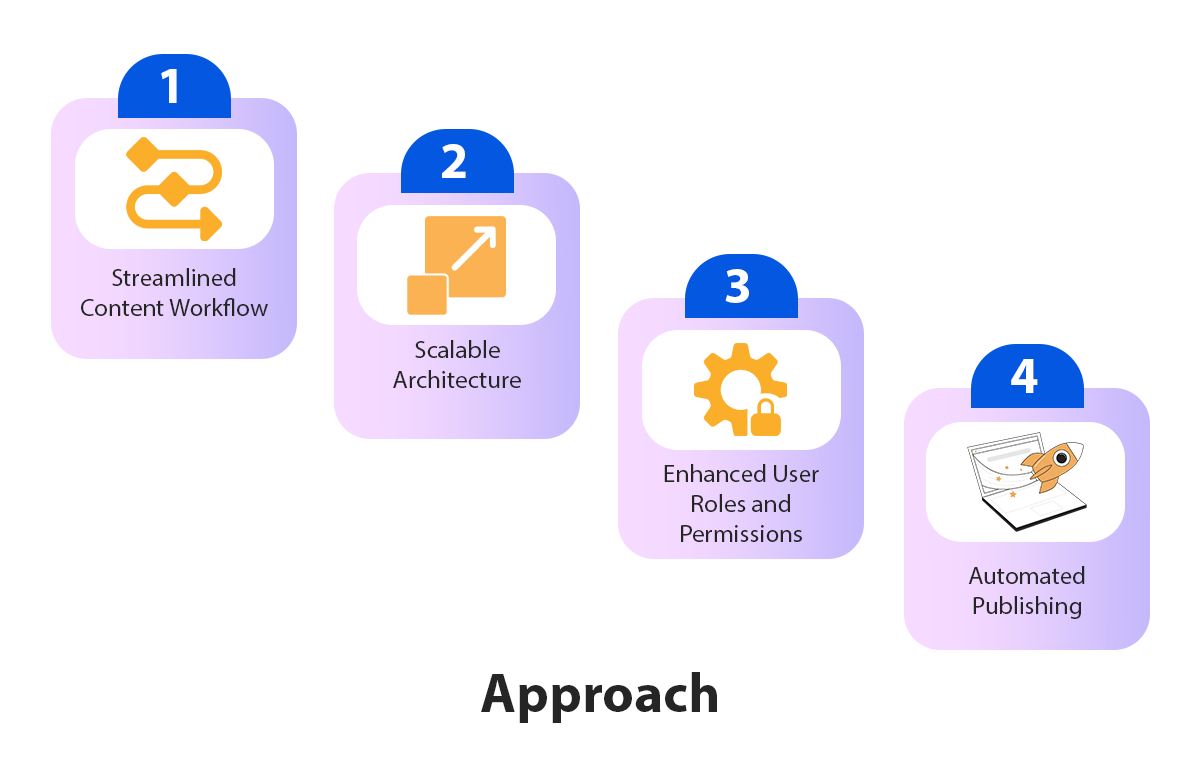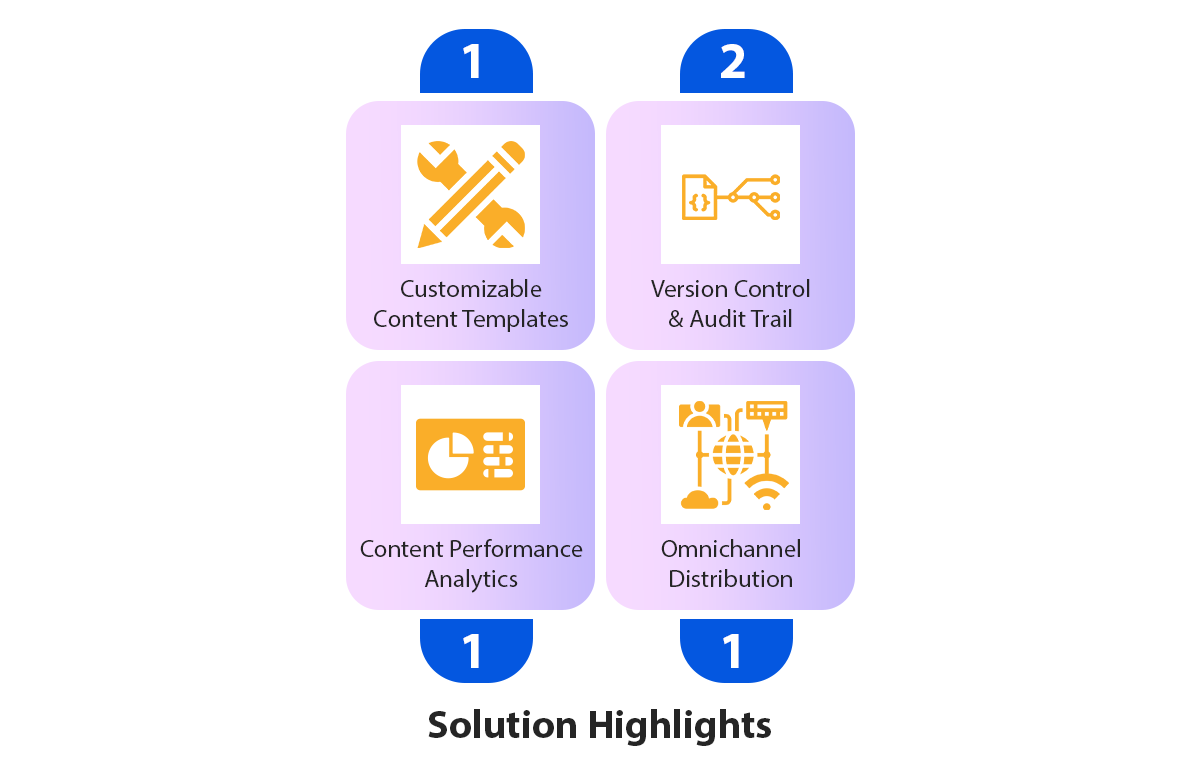Project Overview
Managing a large volume of content quickly and effectively is essential in the media and advertising world. One of our clients, a major player in this fast-paced sector, needed a way to simplify their content processes while maintaining precision and agility. The team sought an adaptable, future-proof solution to organize, manage, and publish content across various platforms.
With these requirements in mind, we at Zenesys took on the challenge. We focused on building a robust and scalable content management system (CMS) that fits their complex workflows. By understanding the unique demands of their industry, we crafted a solution to streamline the content lifecycle, ensuring consistency, speed, and flexibility.
Key Challenges
The client was facing specific hurdles:

- Volume and Velocity: Publishing high volumes of content in rapid cycles was overwhelming. Even a minor slowdown in content flow could lead to significant setbacks in their campaigns.
- Consistency Across Channels: Maintaining brand voice across different platforms was challenging. Discrepancies, even minor ones, led to confusion and impacted audience trust.
- Complex Approval Processes: Content approvals involved multiple stakeholders with varying levels of authority, creating bottlenecks and slowing down time-to-market.
- Content Security and Access: The need for secure access while allowing multiple users to contribute to content meant managing permissions was critical.
Approach
We recognized that this project required a unique approach. Adopting an off-the-shelf CMS wasn’t feasible due to the complexity of the client’s needs. Therefore, we developed a custom content management solution designed for high-performance and adaptability.

Our approach focused on four main areas:
1. Streamlined Content Workflow
We restructured the content workflow to reduce unnecessary steps, ensuring a smooth path from content creation to publication. With this setup, editors, designers, and approvers could work in harmony without redundant back-and-forth.
2. Scalable Architecture
The system was built with future expansion in mind. We chose a modular architecture, enabling seamless integration with additional tools as the client's needs evolve.
3. Enhanced User Roles and Permissions
Security was a priority, especially when handling sensitive content. We established precise user roles, allowing contributors to access only the areas necessary for their tasks, reducing unauthorized access risks.
4. Automated Publishing
We introduced automation to handle repetitive tasks, particularly in publishing. This automation helped to cut down the time needed to get content live, especially during peak campaign times.
Solution
Our solution incorporated several standout features tailored specifically for the client’s needs:

- Customizable Content Templates: The system offered a range of templates that aligned with the client’s brand guidelines, speeding up content creation without sacrificing quality.
- Version Control & Audit Trail: Every piece of content was tracked meticulously. The version control ensured that any adjustments could be rolled back if needed, while the audit trail provided transparency into who made each change.
- Content Performance Analytics: Built-in analytics gave the client insights into how each piece of content performed, helping them refine their approach based on real-time feedback.
- Omnichannel Distribution: We implemented tools that allowed the client to push content to multiple channels from a single platform, ensuring brand consistency without additional manual work.
Need a Reliable CMS Development Partner?
From custom builds to seamless integrations, we craft CMS solutions tailored to your business goals.
Explore CMS Development ServicesResults
The results spoke volumes about the impact of our solution. Here’s what we observed post-implementation:
- 50% Faster Time-to-Publish: Content moved from concept to live publishing in record time, cutting delays by half.
- Increased User Satisfaction: The client’s team noted that the new system was intuitive and easy to navigate, which boosted productivity.
- Brand Consistency Across Channels: The single-platform publishing feature ensured uniformity in brand messaging, enhancing audience engagement and trust.
- Data-Driven Decision Making: With access to performance analytics, the client could make informed content strategy adjustments that aligned with audience preferences.

.webp?lang=en-US&ext=.webp)

.webp?lang=en-US&ext=.webp)

